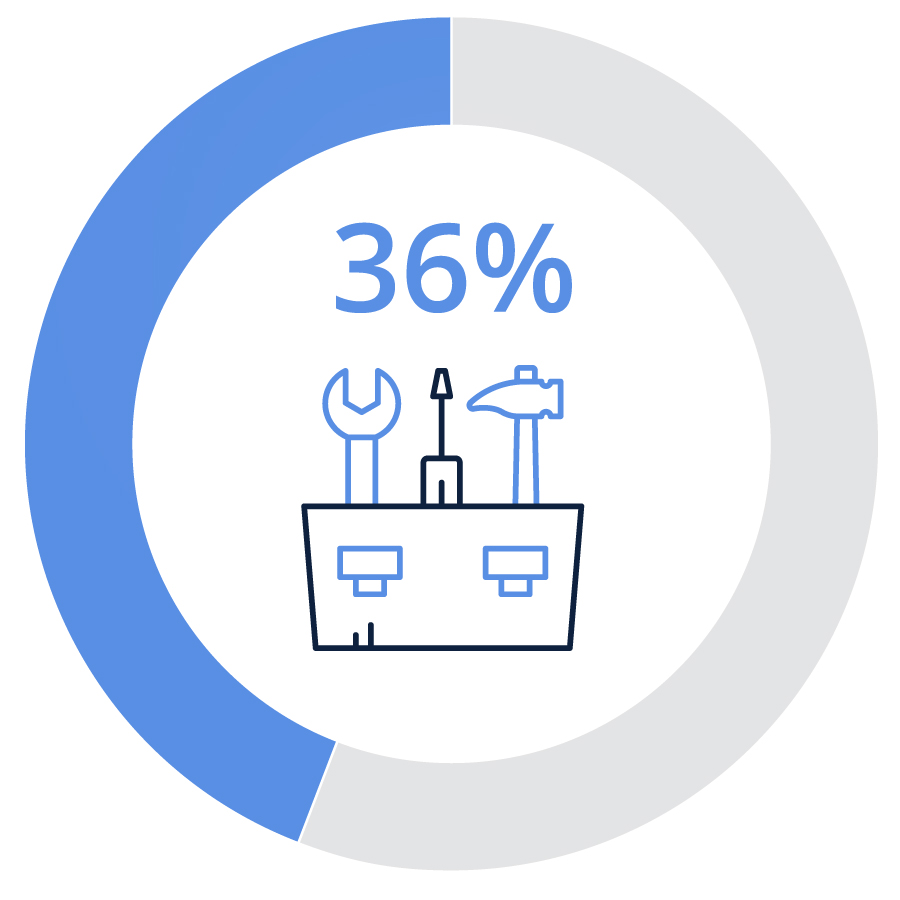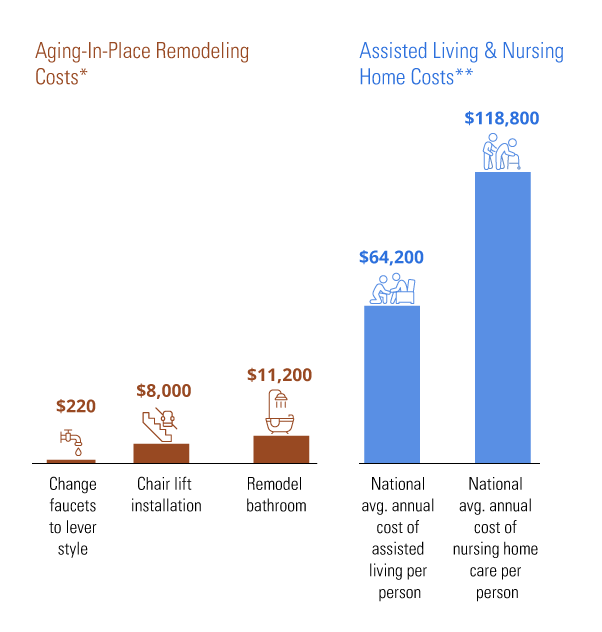Many Aging Homeowners Are Focused on Renovations to Remain in Their Homes

 |
Percent of homeowners over 50 who plan to modify their homes to enable them to stay as they age |
Source: Most Retirees Prefer to Stay Put, AARP, 10/10/18. Most recent data available.
You’ve heard it. That strange, barely audible noise coming from your car. You try to ignore it and think that maybe it will just go away. But it just gets louder over time and triggers a warning light on the dashboard. That’s when you realize that instead of a paying $150 for brake pads, you have to pay $500 for a whole new brake system because you procrastinated.
If you’re planning to age in your home, procrastination could cost way more than some auto repairs. Not making necessary age-friendly modifications could result in an injury, forcing you out of your home and into assisted living or a nursing home. A Certified Aging-in-Place Specialist (CAPS) can help you with planning and making your home safer for aging.
What’s a CAPS Professional
CAPS professionals are trained to understand the housing needs of aging people, and identify home modifications to ensure ease of mobility and safety. They can provide information about the cost and time required for remodeling projects.
They’re certified by the National Association of Home Builders (NAHB). Most CAPS professionals are home remodelers, but others are health care professionals, home-care providers, architects, and designers.
Why We May Need a CAPS Professional?
As we get older, most of us want to age in our homes, or “age in place,” rather than move to an assisted living community or a nursing home.
We’re comfortable in our homes. We like the privacy and freedom that comes with home ownership. At home, we don’t have to ask if we’re allowed to have a dog or a cat. We enjoy having enough space to enjoy time with friends and family. We don’t like the thought of being crammed into a small living place and having to get rid of lots of our stuff.
But while we want to age in our homes, we need to consider if aging in place will be safe.
Most Homes Aren’t Built for Optimal Aging
Stairs, rugs, bathtubs, and poor lighting create potential for trips and falls which could result in serious injuries. While we could gradually remodel in anticipation of these challenges to make our homes safer, it’s easy to put it off until it’s too late.






